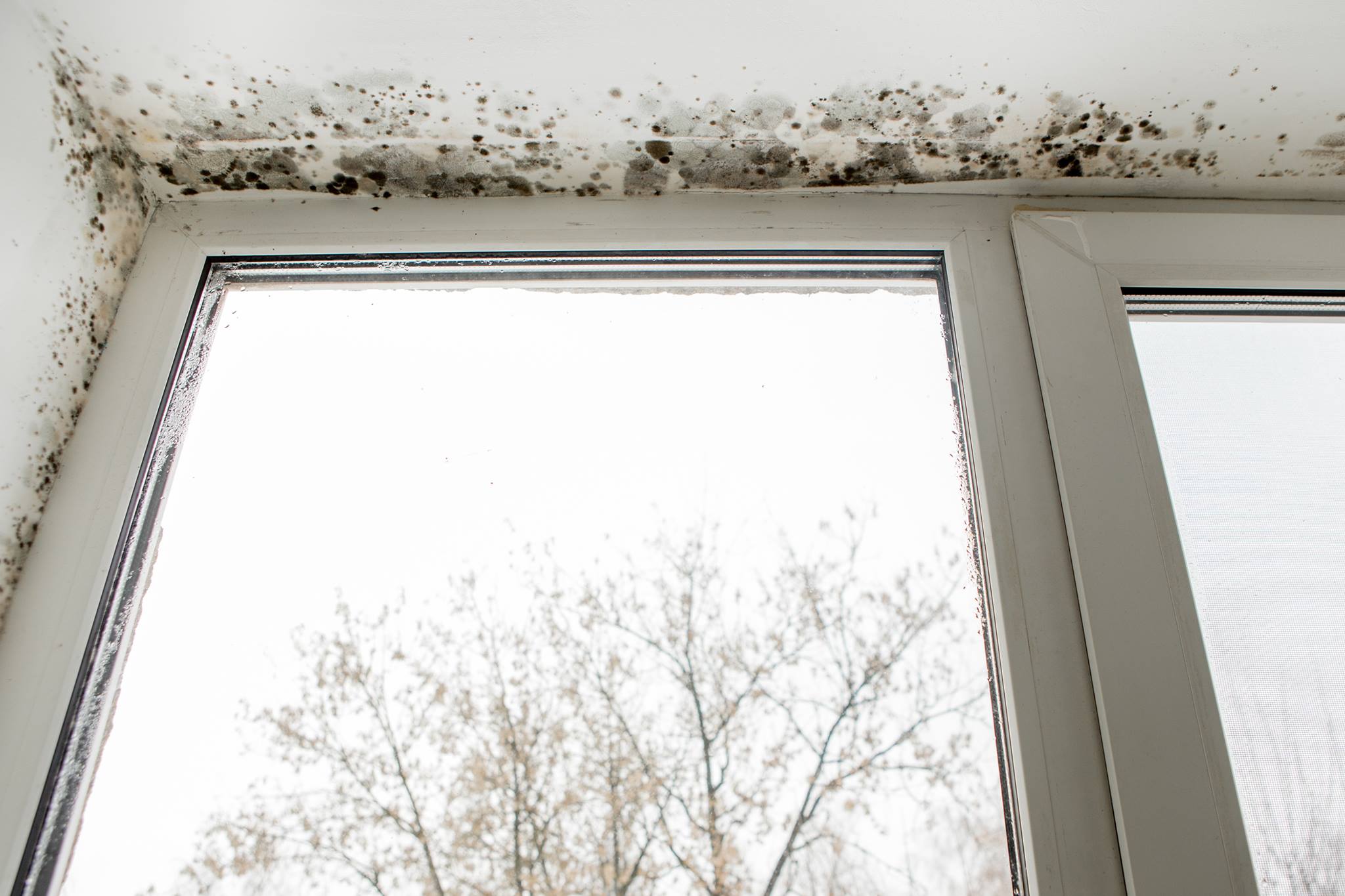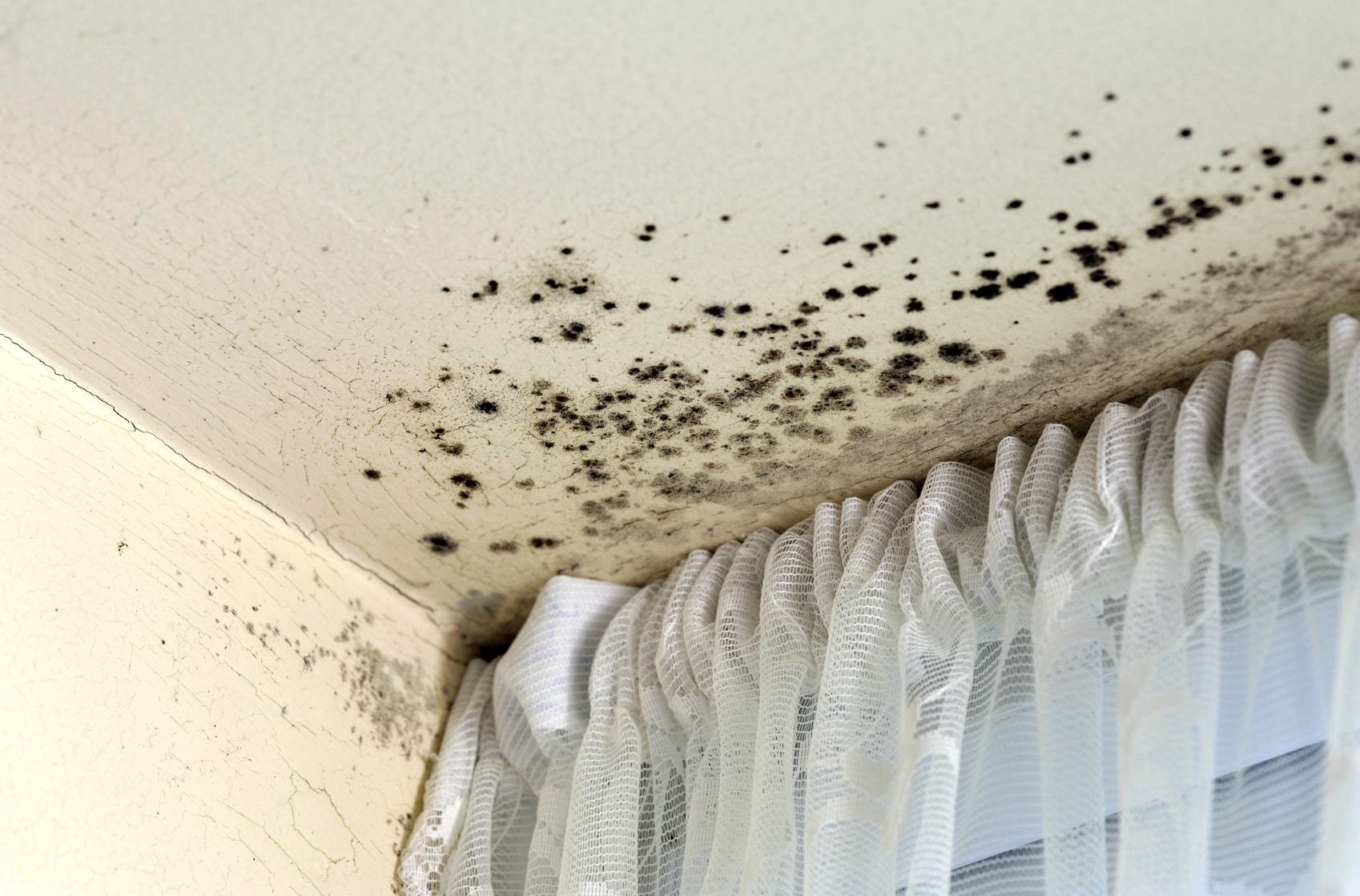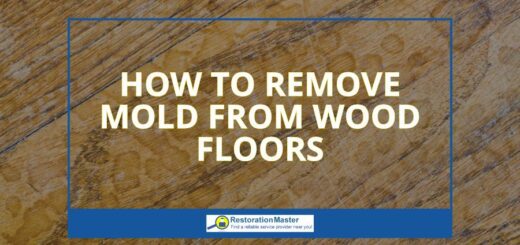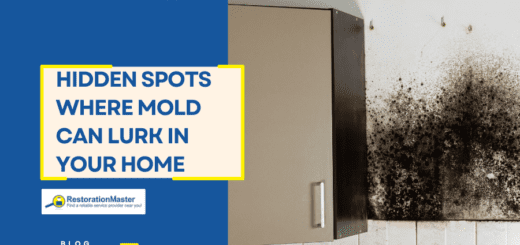Mold Mildew Cleanup FAQ
 Time to get rid of that moldMold is a type of fungus that grows in damp or humid conditi... More and mildewMildew is a type of fungus that grows on damp surfaces, typi... More once and for all! These are the top FAQ about moldMold is a type of fungus that grows in damp or humid conditi... More mildewMildew is a type of fungus that grows on damp surfaces, typi... More clean-up.
Time to get rid of that moldMold is a type of fungus that grows in damp or humid conditi... More and mildewMildew is a type of fungus that grows on damp surfaces, typi... More once and for all! These are the top FAQ about moldMold is a type of fungus that grows in damp or humid conditi... More mildewMildew is a type of fungus that grows on damp surfaces, typi... More clean-up.
What is mold?
Molds produce tiny sporesSpores are microscopic reproductive units of fungi or mold t... More to reproduce. MoldMold is a type of fungus that grows in damp or humid conditi... More sporesSpores are microscopic reproductive units of fungi or mold t... More waft through the indoor and outdoor air continually. When moldMold is a type of fungus that grows in damp or humid conditi... More sporesSpores are microscopic reproductive units of fungi or mold t... More land on a damp spot indoors, they may begin growing and digesting whatever they are growing on in order to survive. There are molds that can grow on wood, paper, carpet, and foods. When excessive moisture or water accumulates indoors, moldMold is a type of fungus that grows in damp or humid conditi... More growth will often occur, particularly if the moisture problem remains undiscovered or unaddressed. There is no practical way to eliminate all mold and moldMold is a type of fungus that grows in damp or humid conditi... More sporesSpores are microscopic reproductive units of fungi or mold t... More in the indoor environment; the way to control indoor moldMold is a type of fungus that grows in damp or humid conditi... More growth is to control moisture.
How to clean up mold?
The key to moldMold is a type of fungus that grows in damp or humid conditi... More control is moisture control.
- Scrub moldMold is a type of fungus that grows in damp or humid conditi... More off hard surfaces with detergent and water, and dry completely.
- Fix plumbing leaks and other water problems as soon as possible. Dry all items completely.
- Absorbent or porousPorous describes a material that contains small openings or ... More materials, such as ceiling tiles and carpet, may have to be thrown away if they become moldy. MoldMold is a type of fungus that grows in damp or humid conditi... More can grow on or fill in the empty spaces and crevices of porousPorous describes a material that contains small openings or ... More materials, so the moldMold is a type of fungus that grows in damp or humid conditi... More may be difficult or impossible to remove completely.
- Avoid exposing yourself or others to moldMold is a type of fungus that grows in damp or humid conditi... More.
- Do not paint or caulk moldy surfaces. Clean up the mold and dry the surfaces before painting. Paint applied over moldy surfaces is likely to peel.
If you are unsure about how to clean an item, or if the item is expensive or of sentimental value, you may wish to consult a specialist. Specialists in furniture repairRepair is the act of fixing or restoring damaged property, m... More, restorationRestoration is the process of returning a property to its pr... More, painting, art restorationRestoration is the process of returning a property to its pr... More and conservation, carpet and rug cleaning, water damage, and fire or water restorationRestoration is the process of returning a property to its pr... More are commonly listed in phone books. Be sure to ask for and check references. Look for specialists who are affiliated with professional organizations.
Should I use bleach to clean up mold?

Biocides are substances that can destroy living organisms. The use of a chemical or biocide that kills organisms such as moldMold is a type of fungus that grows in damp or humid conditi... More (chlorine bleach, for example) is not recommended as a routine practice during mold cleanup. There may be instances, however, when professional judgment may indicate its use (for example, when immune-compromised individuals are present). In most cases, it is not possible or desirable to sterilize an area; a background level of moldMold is a type of fungus that grows in damp or humid conditi... More sporesSpores are microscopic reproductive units of fungi or mold t... More will remain – these sporesSpores are microscopic reproductive units of fungi or mold t... More will not grow if the moisture problem has been resolved. If you choose to use disinfectants or biocides, always ventilate the area and exhaust the air to the outdoors. Never mix chlorine bleach solutionA solution is a homogeneous mixture of two or more substance... More with other cleaning solutions or detergents that contain ammonia because toxic fumes could be produced.
Please note: Dead moldMold is a type of fungus that grows in damp or humid conditi... More may still cause allergic reactions in some people, so it is not enough to simply kill the moldMold is a type of fungus that grows in damp or humid conditi... More, it must also be removed.
How can I tell if I have a mold problem?
Molds are usually not a problem indoors, unless moldMold is a type of fungus that grows in damp or humid conditi... More sporesSpores are microscopic reproductive units of fungi or mold t... More land on a wet or damp spot and begin growing. Molds are part of the natural environment. Outdoors, molds play a part in nature by breaking down dead organic matter such as fallen leaves and dead trees, but indoors, moldMold is a type of fungus that grows in damp or humid conditi... More growth should be avoided. Molds reproduce by means of tiny sporesSpores are microscopic reproductive units of fungi or mold t... More; the sporesSpores are microscopic reproductive units of fungi or mold t... More are invisible to the naked eye and float through outdoor and indoor air. MoldMold is a type of fungus that grows in damp or humid conditi... More may begin growing indoors when moldMold is a type of fungus that grows in damp or humid conditi... More sporesSpores are microscopic reproductive units of fungi or mold t... More land on surfaces that are wet. There are many types of moldMold is a type of fungus that grows in damp or humid conditi... More, and none of them will grow without water or moisture.
It is impossible to get rid of all moldMold is a type of fungus that grows in damp or humid conditi... More and moldMold is a type of fungus that grows in damp or humid conditi... More sporesSpores are microscopic reproductive units of fungi or mold t... More indoors; some mold spores will be found floating through the air and in house dust. The moldMold is a type of fungus that grows in damp or humid conditi... More sporesSpores are microscopic reproductive units of fungi or mold t... More will not grow if moisture is not present. Indoor moldMold is a type of fungus that grows in damp or humid conditi... More growth can and should be prevented or controlled by overseeing moisture indoors. If there is moldMold is a type of fungus that grows in damp or humid conditi... More growth in your home, you must clean up the moldMold is a type of fungus that grows in damp or humid conditi... More and fix the water problem. If you clean up the moldMold is a type of fungus that grows in damp or humid conditi... More, but don’t fix the water problem, most likely, the moldMold is a type of fungus that grows in damp or humid conditi... More problem will come back.
How much does mold remediation cost?
Costs vary greatly, but having one of our project managers come out to assess the situation doesn’t cost a thing. Most customers are very happy to find that we can respond quickly and remediate their mold problem while providing an excellent oversight and quality controlQuality control (QC) is a reactive process that involves ins... More. We have handled projects ranging in scope from a basement closet to an entire retirement home and everything in between. The average residential project takes less than three days to finish.
My basement used to smell like mold, but now it seems okay. Do I still have a problem?
The odorAn odor is a smell, often detectable by the human nose, whic... More that moldMold is a type of fungus that grows in damp or humid conditi... More gives off is the result of its digestion process, which is referred to as mvocs (microbial volatile organic compounds). They can result in headaches, respiratory irritation, etc, and some individuals are very sensitive to them, but they are only produced while the moldMold is a type of fungus that grows in damp or humid conditi... More is actively digesting something. If the wet structureStructure refers to the framework or components of a buildin... More dries out the moldMold is a type of fungus that grows in damp or humid conditi... More may go dormant and will no longer produce an odorAn odor is a smell, often detectable by the human nose, whic... More. If re-exposed to moisture, the colony will reactive and the odorAn odor is a smell, often detectable by the human nose, whic... More may return.
Instead of removing the affected drywall to remediate the mold problem, can’t you just spray something on it?
This is very commonly asked by our customers. MoldMold is a type of fungus that grows in damp or humid conditi... More can be killed, but the problem is that a dead spore poses most of the same health risks to humans that a live spore does. Allergic and toxic reactions do not change simply because the spore dies; the shape of the spore initiates the allergy and toxins are not destroyed by killing the spore itself. The true definition of “remediation” is to remove the affected structureStructure refers to the framework or components of a buildin... More and clean what remains.
How to prevent mold from coming back?
The only way to prevent moldMold is a type of fungus that grows in damp or humid conditi... More from coming back is to control the amount of moisture that your home is exposed to. Controlling the humidityHumidity is the amount of moisture or water vapor present in... More and rapid dryingDrying is the process of removing moisture from materials, s... More of any water intrusion is the key to controlling moldMold is a type of fungus that grows in damp or humid conditi... More growth.
How to control moisture in your home?

If moldMold is a type of fungus that grows in damp or humid conditi... More is a problem in your home, you should clean up the moldMold is a type of fungus that grows in damp or humid conditi... More promptly and fix the water problem. It is important to dry water-damaged areas and items within 24-48 hours to prevent moldMold is a type of fungus that grows in damp or humid conditi... More growth. Water in your home can come from many sources. Water can enter your home by leaking or by seeping through basement floors. Showers and even cooking can add moisture to the air in your home. The amount of moisture that the air in your home can hold depends on the temperature of the air. As the temperature goes down, the air is able to hold less moisture. This is why, in cold weather, moisture condenses on cold surfaces (for example, drops of water form on the inside of a window). This moisture can encourage biological pollutants to grow.
Ways to control moisture in your home:
- Fix leaks and seepage. If water is entering the house from the outside, your options range from simple landscaping to extensive excavation and waterproofingWaterproofing is the application of materials or coatings de... More. (The ground should slope away from the house.) Water in the basement can result from the lack of gutters or a water flow toward the house. Water leaks in pipes or around tubs and sinks can provide a place for biological pollutants to grow.
- Put a plastic cover over dirt in crawlspaces to prevent moisture from coming in from the ground. Be sure crawlspaces are well-ventilated.
- Use exhaust fans in bathrooms and kitchens to remove moisture to the outside (not into the attic). Vent your clothes dryer to the outside.
- Turn off certain appliances (such as humidifiers or kerosene heaters) if you notice moisture on windows and other surfaces.
- Use dehumidifiers and air conditioners, especially in hot, humid climates, to reduce moisture in the air, but be sure that the appliances themselves don’t become sources of biological pollutants.
- Raise the temperature of cold surfaces where moisture condenses. Use insulationInsulation is a material used in buildings to reduce the tra... More or storm windows. (A storm window installed on the inside works better than one installed on the outside.) Open doors between rooms (especially doors to closets which may be colder than the rooms) to increase circulation. Circulation carries heat to the cold surfaces. Increase air circulation by using fans and by moving furniture from wall corners to promote air and heat circulation. Be sure that your house has a source of fresh air and can expel excessive moisture from the home.
- Pay special attention to carpet on concrete floors. Carpet can absorb moisture and serve as a place for biological pollutants to grow. Use area rugs which can be taken up and washed often. In certain climates, if carpet is to be installed over a concrete floor, it may be necessary to use a vapor barrierVapor barrier is a material or layer designed to resist the ... More (plastic sheeting) over the concrete and cover that with sub-flooring (insulationInsulation is a material used in buildings to reduce the tra... More covered with plywood) to prevent a moisture problem.
- Moisture problems and their solutions differ from one climate to another. The Northeast is cold and wet; the Southwest is hot and dry; the South is hot and wet; and the Western Mountain states are cold and dry. All of these regions can have moisture problems. For example, evaporative coolers used in the Southwest can encourage the growth of biological pollutants. In other hot regions, the use of air conditioners which cool the air too quickly may prevent the air conditioners from running long enough to remove excess moisture from the air. The types of construction and weatherization for the different climates can leadLead is a heavy metal that can be toxic to humans, especiall... More to different problems and solutions.
Moisture On Windows

Your humidistat is set too high if excessive moisture collects on windows and other cold surfaces. Excess humidityHumidity is the amount of moisture or water vapor present in... More for a prolonged time can damage walls, especially when outdoor air temperatures are very low. Excess moisture condenses on window glass because the glass is cold. Other sources of excess moisture besides overuse of a humidifier may be long showers, running water for other uses, boiling or steaming in cooking, plants, and dryingDrying is the process of removing moisture from materials, s... More clothes indoors. A tight, energy efficient house holds more moisture inside; you may need to run a kitchen or bath ventilating fan sometimes, or open a window briefly. Storm windows and caulking around windows keep the interior glass warmer and reduce condensation of moisture there.
Humidifiers are not recommended for use in buildings without proper vaporVapor is the gaseous form of a substance that is typically l... More barriers because of potential damage from moisture buildup. Consult a building contractor to determine the adequacy of the vapor barrierVapor barrier is a material or layer designed to resist the ... More in your house. Use a humidityHumidity is the amount of moisture or water vapor present in... More indicator to measure the relative humidityRelative humidity (RH) is the percentage of moisture in the ... More in your house. The American Society of Heating and Air Conditioning Engineers (ASHRAE) recommends these maximum indoor humidityHumidity is the amount of moisture or water vapor present in... More levels.
Source: Anne Field, Extension Specialist, Emeritus, with reference from the Association for Home Appliance Manufacturers.
What is the difference between Mold and Mildew?
MildewMildew is a type of fungus that grows on damp surfaces, typi... More refers to certain kinds of moldMold is a type of fungus that grows in damp or humid conditi... More or fungus. The term mildewMildew is a type of fungus that grows on damp surfaces, typi... More is often used generically to refer to moldMold is a type of fungus that grows in damp or humid conditi... More growth, usually with a flat growth habit. Molds include all species of microscopic fungiFungi are a group of organisms, including mold, mildew, and ... More that grow in the form of multicellular filaments, called hyphae. Molds can thrive on any organic matter, including clothing, leather, paper, and the ceilings, walls and floors of homes with moisture management problems. MildewMildew is a type of fungus that grows on damp surfaces, typi... More often lives on shower walls, windowsills, and other places where moisture levels are high. There are many species of molds. In unaired places, such as basements, they can produce a strong musty odorAn odor is a smell, often detectable by the human nose, whic... More.
I have never had water in my house. Where is the mold coming from?

MoldMold is a type of fungus that grows in damp or humid conditi... More simply needs a source of moisture to grow, and it doesn’t have to be in the form of actual free water. If the relative humidityRelative humidity (RH) is the percentage of moisture in the ... More reaches 60% or higher, microscopic dew point condensation can occur on colder surfaces, which will provide the moisture needed for growth.
Can any serious mold problem be removed?
Despite the horror stories that you hear, it is never necessary to bulldoze a house into the ground to eliminate moldMold is a type of fungus that grows in damp or humid conditi... More. Some projects may involve extensive structural removal and cleaning, but framing, sub-flooring, trusses, etc are all salvageable unless rot has set in.
Can mold cause health problems?
Molds are usually not a problem indoors, unless mold spores land on a wet or damp spot and begin growing. Molds have the potential to cause health problems. Molds produce allergens (substances that can cause allergic reactions), irritants, and in some cases, potentially toxic substancesToxic substances are chemicals or materials that can cause h... More (mycotoxinsMycotoxins are toxic substances produced by certain types of... More). Inhaling or touching moldMold is a type of fungus that grows in damp or humid conditi... More or moldMold is a type of fungus that grows in damp or humid conditi... More sporesSpores are microscopic reproductive units of fungi or mold t... More may cause allergic reactions in sensitive individuals. Allergic responses include hay fever-type symptoms, such as sneezing, runny nose, red eyes, and skin rash (dermatitis). Allergic reactions to moldMold is a type of fungus that grows in damp or humid conditi... More are common. They can be immediate or delayed. Molds can also cause asthma attacks in people with asthma who are allergic to moldMold is a type of fungus that grows in damp or humid conditi... More. In addition, moldMold is a type of fungus that grows in damp or humid conditi... More exposure can irritate the eyes, skin, nose, throat, and lungs of both mold-allergic and non-allergic people. Symptoms other than the allergic and irritantAn irritant is a substance that causes temporary discomfort ... More types are not commonly reported as a result of inhaling moldMold is a type of fungus that grows in damp or humid conditi... More. Research on moldMold is a type of fungus that grows in damp or humid conditi... More and health effects is ongoing. For more detailed information consult a health professional. You may also wish to consult your state or local health department.
Why is mold growing in my home?
Molds are part of the natural environment. Outdoors, molds play a part in nature by breaking down dead organic matter such as fallen leaves and dead trees, but indoors, moldMold is a type of fungus that grows in damp or humid conditi... More growth should be avoided. Molds reproduce by means of tiny sporesSpores are microscopic reproductive units of fungi or mold t... More; the sporesSpores are microscopic reproductive units of fungi or mold t... More are invisible to the naked eye and float through outdoor and indoor air. MoldMold is a type of fungus that grows in damp or humid conditi... More may begin growing indoors when moldMold is a type of fungus that grows in damp or humid conditi... More sporesSpores are microscopic reproductive units of fungi or mold t... More land on surfaces that are wet. There are many types of moldMold is a type of fungus that grows in damp or humid conditi... More, and none of them will grow without water or moisture.
What is a HEPA filter?
is a type of pleated mechanical air filter. It is an acronym for “high efficiency particulate air [filter]” (as officially defined by the U.S. Dept. of Energy). HEPA can theoretically remove at least 99.97% of dust, pollen, moldMold is a type of fungus that grows in damp or humid conditi... More, bacteria, and any airborne particles with a size of 0.3 microns (µm). The diameter specification of 0.3 microns responds to the worst case; the most penetrating particle size (MPPS). Particles that are larger or smaller are trapped with even higher efficiency. Using the worst case particle size results in the worst case efficiency rating (i.e. 99.97% or better for all particle sizes).
What are the requirements to build an Indoor airPLUS home?
A home must first be designed to meet ENERGY STAR requirements. Indoor airPLUS construction specifications require up to 30 additional home design and construction features to help protect qualified homes from moisture and moldMold is a type of fungus that grows in damp or humid conditi... More, radonRadon is a naturally occurring radioactive gas that can accu... More, pest related contaminants, combustion gases, and other airborne pollutants. The home is then inspected and verified by an independent third-party to comply with the program requirements. The Indoor airPLUS verification process is integrated with ENERGY STAR processes, minimizing the need for additional inspectionInspection is the careful examination and assessment of a pr... More services.
How do molds affect people?

MoldMold is a type of fungus that grows in damp or humid conditi... More growth behind wallpaper
Molds have the potential to cause health problems. Molds produce allergens (substances that can cause allergic reactions), irritants, and in some cases, potentially toxic substancesToxic substances are chemicals or materials that can cause h... More (mycotoxinsMycotoxins are toxic substances produced by certain types of... More). Inhaling or touching moldMold is a type of fungus that grows in damp or humid conditi... More or moldMold is a type of fungus that grows in damp or humid conditi... More sporesSpores are microscopic reproductive units of fungi or mold t... More may cause allergic reactions in sensitive individuals. Allergic responses include hay fever-type symptoms, such as sneezing, runny nose, red eyes, and skin rash (dermatitis). Allergic reactions to moldMold is a type of fungus that grows in damp or humid conditi... More are common. They can be immediate or delayed. Molds can also cause asthma attacks in people with asthma who are allergic to moldMold is a type of fungus that grows in damp or humid conditi... More. In addition, moldMold is a type of fungus that grows in damp or humid conditi... More exposure can irritate the eyes, skin, nose, throat, and lungs of both mold-allergic and non-allergic people. Symptoms other than the allergic and irritantAn irritant is a substance that causes temporary discomfort ... More types are not commonly reported as a result of inhaling moldMold is a type of fungus that grows in damp or humid conditi... More. Research on moldMold is a type of fungus that grows in damp or humid conditi... More and health effects is ongoing. For more detailed information consult a health professional.
What if I live in an apartment?
Apartments can have the same indoor air problems as single-family homes because many of the pollutionPollution is the introduction of harmful substances into the... More sources, such as the interior building materials, furnishings, and household products, are similar. Indoor air problems similar to those in offices are caused by such sources as contaminated ventilationVentilation is the process of exchanging or circulating air ... More systems, improperly placed outdoor air intakes, or maintenanceMaintenance is the routine care, inspection, and repair of a... More activities.
Solutions to air quality problems in apartments, as in homes and offices, involve such actions as: eliminating or controlling the sources of pollutionPollution is the introduction of harmful substances into the... More, increasing ventilationVentilation is the process of exchanging or circulating air ... More, and installing air cleaning devices. Often a resident can take the appropriate action to improve the indoor air qualityIndoor air quality (IAQ) refers to the condition of the air ... More by removing a source, altering an activity, unblocking an air supply vent, or opening a window to temporarily increase the ventilationVentilation is the process of exchanging or circulating air ... More; in other cases, however, only the building owner or manager is in a position to remedy the problem.
What causes asthma symptoms, episodes or attacks?
Things that cause asthma symptoms, episodes or attacks are called triggers. Triggers are everywhere. Your home, workplace, or your child’s school or childcare setting can be full of triggers such as virusesViruses are microscopic infectious agents that can only repr... More, pests and moldMold is a type of fungus that grows in damp or humid conditi... More.
If you or a loved one has asthma, it’s important to learn what triggers an asthma episode. You should also learn what steps you can take to reduce these triggers.
To learn more about common asthma triggers and steps you can take to reduce exposure to these triggers, visit
What are some common asthma triggers?
- Secondhand (cigarette) Smoke
- Cockroaches and Other Pests
- Pets and Dust
- Molds
- Outdoor Air PollutionPollution is the introduction of harmful substances into the... More
- Cold virusesViruses are microscopic infectious agents that can only repr... More
- Running, Playing, and Exercise
- Be sure to work with your doctor to identify your or your child’s triggers.
- Take steps to control these triggers.











